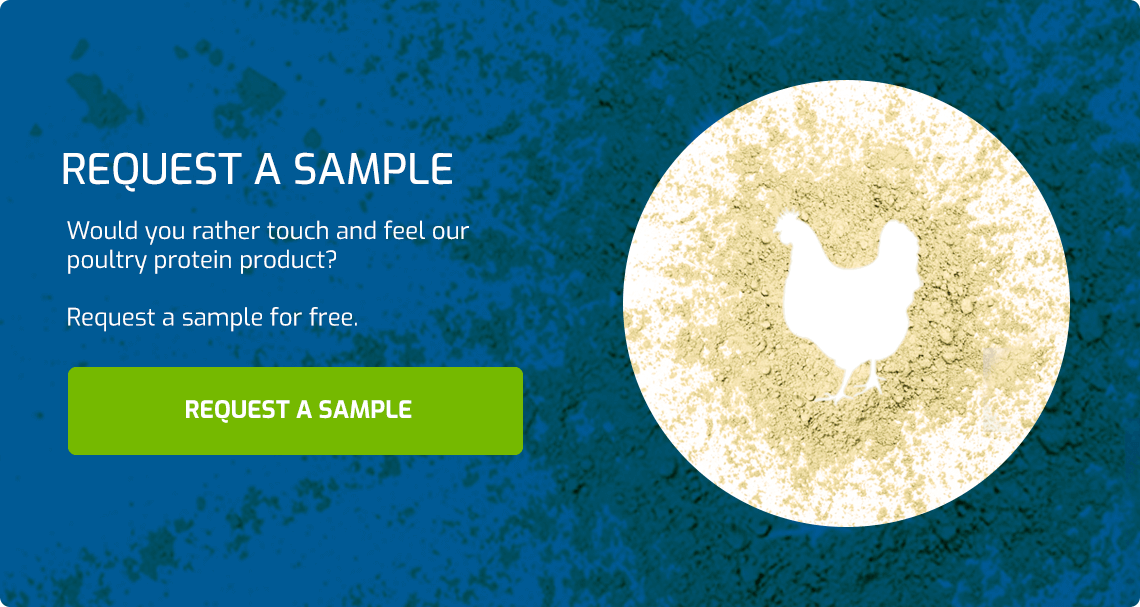- +31(0)499-364-820
- News & Blogs
-
EnglishEN
-
If you are looking to improve the texture and yield (or both at the same time) of a chicken or turkey product, your solution could be functional poultry protein. Here, we break down specifically how QBind Chicken FPP C and QBind Turkey FPP T will improve texture and yield.
Including QBind Chicken FPP C and QBind Turkey FPP T in a chicken or turkey product will give it a more firm and meatier texture, which improves the eating quality and also the sliceability of products like poultry hams. Plus, that enhanced sliceability boosts overall yield. There are other characteristics that functional poultry protein adds to a chicken or turkey product. Read on to find out.
Enhanced binding
FPP C and FPP T are made up of 40 % collagen and it’s that collagen that keeps the meat matrix bound together, maintains moisture, and also prevents syneresis after the product has been cooked and is sold as ready-to-eat. In a raw product—such as a sausage—the collagen helps hold in water so that the meat dough stays firm and is easier to handle during the food producer’s processing.
Easier to handle
During production that is, the meat dough (or paste) is thicker; it’s easier to form. This also makes it easier to use in the chopper where it is cut down in small meat dough, then put it in the filler, making the filling process easier. And, thus, when the dough is easier to work with, it is also faster to get to the final product during production. We all know that time equals money.
It’s also easier for the consumer when they re-heat something like a hotdog. When a hotdog is initially made during production, it’s heated and then cooled and moisture is lost during cooking. But the collagen in FPP C and FPP T keep the moisture in the hotdog, and thus there is much less syneresis both after production and also when the hotdog gets re-heated by the consumer.

Maintains its shape
If you’re making meatballs or a burger patty, using FPP C or FPP T means the product is more likely to keep its shape (thanks to its binding abilities). This is valuable when you’re selling a raw meatball or patty because the protein binds water that is added to the whole meatmass, making a firmer and thicker dough.
Improved sliceability
Similar to how your chicken or turkey food product will maintain its shape, a cooked version will be that much easier to slice—and lead to a lot less breakage and waste—compared to a product made without FPP C or FPP T. What makes a chicken product with FPP C or a turkey product with FPP T superior in terms of sliceability is a direct result of its firmness and strength; both of which allow it to slice well on a high-speed slicing machine and create little waste (also known as breakage).
A better bite
Let’s move beyond the benefits to you—the food producer—and consider the consumer. Add FPP C to your chicken product or FPP T to your turkey product and it’ll upgrade it from a texture that you can likely break with your tongue to one that’s meaty and requires chewing. Another boon: that bite is juicy. Remember how FPP C and FPP T bind the meat matrix together better? Well that means more moisture is maintained in the product when it’s cooked, and also the collagen melts and gives the product a tender juiciness.
Five advantages of functional chicken and turkey protein
Bottom line, there are (at least) 5 ways that functional chicken and turkey protein can enhance the texture and yield of a chicken or turkey food product: better binding, easier to handle, shape maintenance, enhanced sliceability, and an overall improved bite.
With this now top of mind, the choice to use FPP C or FPP T is nearly a no-brainer. Learn more about functional poultry protein for chicken (QBindChicken FPP C) and for turkey (QBind Turkey FPP T) here. You can also download a full product leaflet on these pages.
Would you like to request a sample and test these proteins? A product specialist from Sonac will arrange for samples to be sent. You can fill out a request here.
